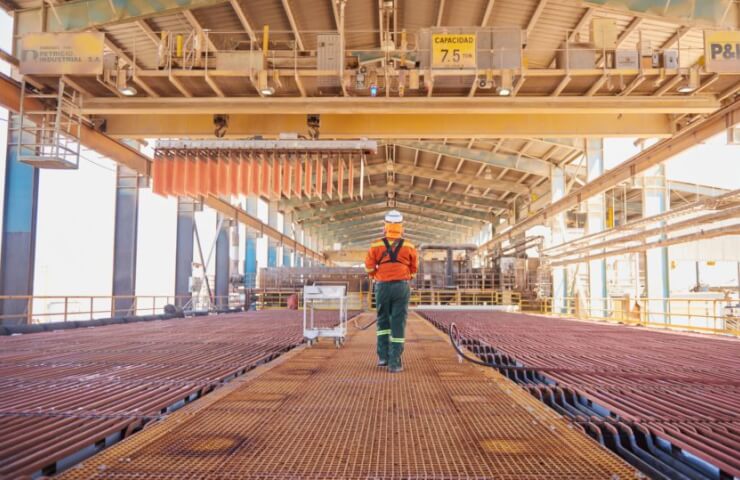Chile's crown as the world's largest copper producer is in jeopardy as the country's production remains below expectations despite billions of dollars invested in new projects over the past 18 years, BMO's Colin Hamilton warned on Thursday.
The commodities analyst noted that he received several questions last week about Chile's year-to-date decline in copper production as first-quarter production reports began to come out from many companies operating in the South American country.
Chile's January copper production spooked investors as it fell 7.5% from the same month in 2021 to 425,700 tonnes, its lowest level in 11 years.
Lower ore quality, water shortages and other temporary short-term problems were the reasons for the sharp drop, cited by the State Chilean Copper Commission (Cochilco). However, for Hamilton, a decline in production is far from uncommon.
BMO estimates that the country's copper production in 2022 will be lower than in 2004, when the country produced just over 5.4 million tons of the metal, equivalent to 37% of global production.
"Following a steady increase in production in the 1990s and early 2000s, production levels have stagnated and projections of 6 million tons per annum plus production never materialized," Hamilton wrote.
Diego Hernandez, president of Chile's National Mining Society (Sonami), remains optimistic. The former chief executive of state-owned Codelco and Antofagasta Plc (LON:AAL) said he expects domestic production to rise in 2023 as Teck Resources expands its Quebrtada Blanca mine, which is operational in the second half of this year.
Hernandez said in March that other major developments are lacking in development, adding that investment should increase once there is more legal and regulatory certainty.
Old mines
According to Hamilton, production problems in Chile are not only related to investment in new projects and expansion, but also a consequence of the aging of existing assets.
"In particular, Chile's SX-EW [cathode] production continues to decline steadily and is now ~500kt below peak levels seen over a decade ago," the analyst wrote.
"Instead of short-term production problems, the potential for Chile's production to continue to underperform is more important in terms of the investment thesis," he added. U.S. cathode imports from Chile are up 37% quarter-on-quarter in the first three months of this year, according to S&P Global.
Chile's Constituent Assembly proposes a series of constitutional changes to replace the market-oriented constitution that dates back to the military dictatorship of General Augusto Pinochet.
These changes could impact mining companies as they could open the door for the nationalization of some of the world's largest copper and lithium assets.
Politicians are also finalizing a new mining royalty bill that will increase tariffs for firms based on gross sales and profitability.
In recent weeks, copper futures on the Comex in New York have traded at a premium to futures on the London Metal Exchange, attracting more cathode copper, especially from South America.




